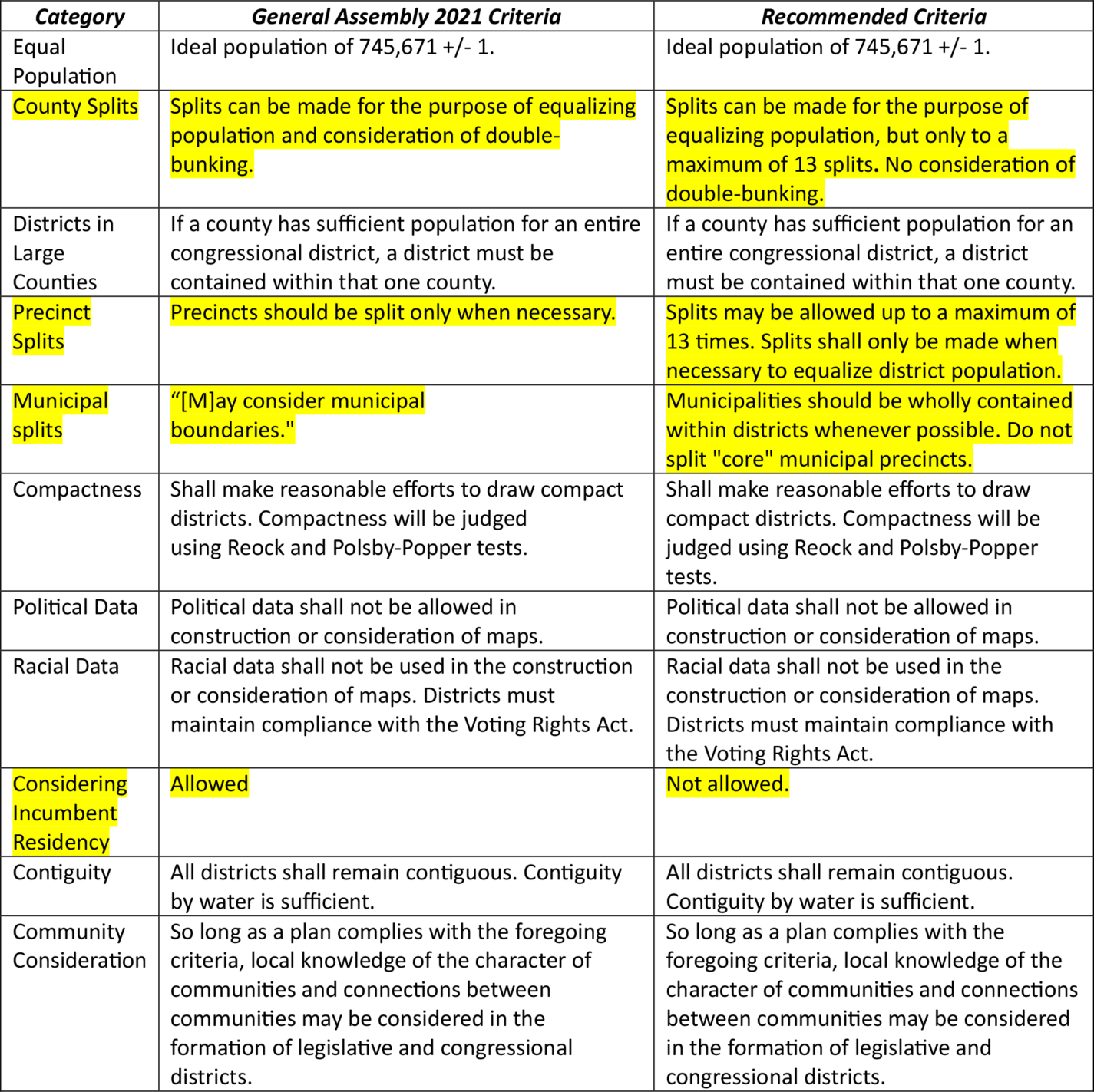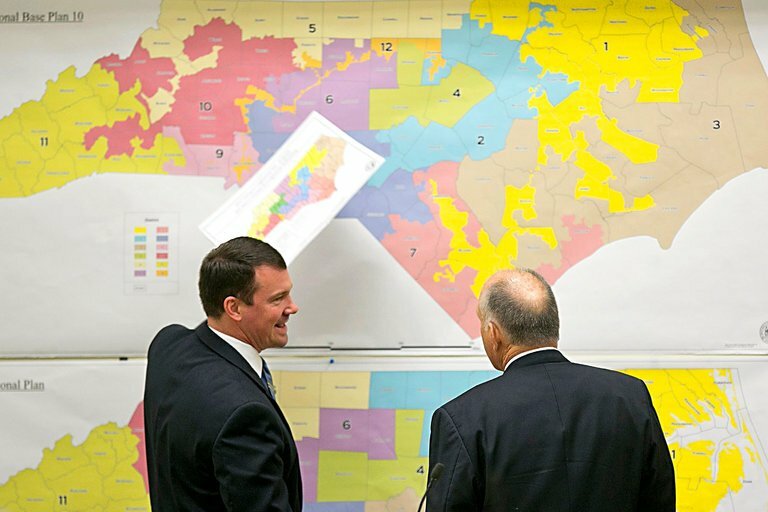Though North Carolina passed its newest budget last week, the legislature will still be busy this week. The legislature still must draw new congressional and legislative maps following the North Carolina Supreme Court’s reversal in the Harper v. Moore Case earlier this year.
The legislature’s joint redistricting committee is having meetings this week at three locations throughout the state to allow for public comment on the redistricting process. The first was at the College of the Albemarle campus in Elizabeth City. Here are the two other locations with links to the public to sign-up.
Tuesday, Sept. 26th: Appalachian State University, Hickory Campus
Wednesday, Sept. 27th: Legislative Office Building, Raleigh
The legislature must establish two sets of criteria, one for legislative and the other for congressional maps, to comply with statutes and prior court rulings. Due to the inherent complexity of state house and senate redistricting, I’ll only be addressing my recommendations for the criteria for the congressional maps. My colleague Dr. Andy Jackson and I wrote in detail our recommendations for redistricting criteria and the application of said criteria in a study published earlier this year.
For the congressional redistricting, the legislature should mostly adhere to the criteria the committee used during the 2021 redistricting process. The only exclusions to the prior criteria I suggest are removing the consideration of member residences and splitting counties or precincts to prevent double-bunking.
In our study on limiting gerrymandering in North Carolina, we restricted research participants to only splitting counties and precincts a maximum of thirteen times each. We also required that they maintain the ten largest municipalities’ “core precincts” in one district. For municipalities that stretch across county lines, we did not require these precincts to be included in this requirement. We defined “Core Precincts” as contiguous precincts fully incorporated within a municipality. North Carolina’s ten largest cities are:
1. Charlotte 873,579
2. Raleigh (Wake) 466,106
3. Greensboro 299,035
4. Durham (Durham) 283,093
5. Winston-Salem 249,545
6. Fayetteville 208,501
7. Cary (Wake) 171,012
8. Wilmington 115,451
9. High Point (Guilford) 107,321
10. Concord 105,240
I’m recommending the committee adopt the criteria I’ve laid out above while keeping its 2021 criteria for equal population, establishing a self-contained district in counties that exceed the ideal population within them, compactness, contiguity, community consideration, and excluding the use of partisan and racial data from the consideration of maps. A list highlighting my recommendations compared to the legislature’s 2021 criteria can be found below. All changes to the committee’s criteria have been highlighted.

Utilizing traditional redistricting criteria, banning the use of political and racial data, and focusing on maintaining municipalities and other communities of interest not only establishes good practices for North Carolina’s redistricting going forward, but also adheres to North Carolina’s political geography. By utilizing a strict set of criteria, we prevent the gamesmanship of political maps by both the legislature and activists who consistently push for outcomes that defy evidence of the most likely outcomes for North Carolina maps.


